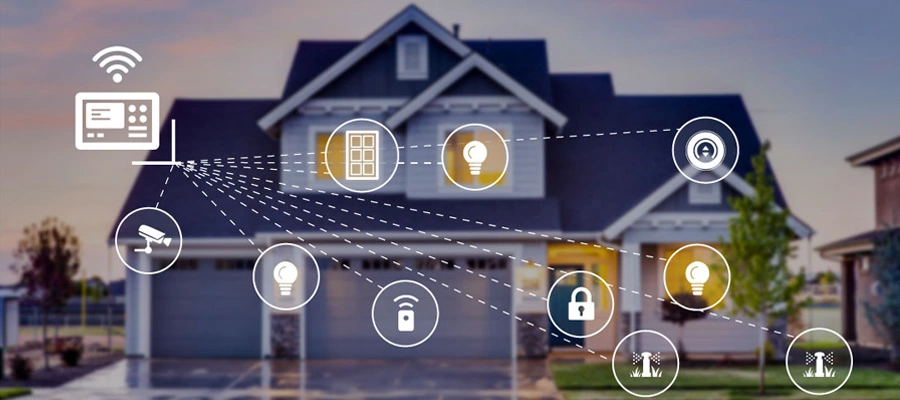In the not-so-distant past, the concept of a “smart home” was confined to early adopters and the privileged. But that’s ancient history now! Explore the fascinating evolution of smart home technology as we trace its journey through time.

The Dawn of Smart Home Tech
Our voyage into the world of smart homes embarks in 1975, with the inception of X10. This innovative home automation platform marked the birth of modern smart home technology. It utilized radio frequency bursts to transmit digital information across a residence’s existing electrical wiring. Pioneering users could remotely oversee their home devices through a command console and compatible modules.
Cutting the Cords: Enter Z-Wave
In 2005, Silicon Labs introduced the game-changing Z-Wave platform. This system also harnessed radio frequency, specifically in the sub-1GHz band, avoiding interference from Wi-Fi and other wireless technologies, like Bluetooth. Z-Wave products could form a network mesh, allowing seamless communication between devices. Additionally, homeowners could expand their network by incorporating non-Z-Wave products through Z-Wave accessory modules.
Smart Homes That Learn: The Nest Revolution
In 2010, the Nest Learning Thermostat, developed by former Apple engineers, emerged. This revolutionary device shifted the landscape of smart home technology by prioritizing at-home wireless Internet for remote control of devices. What truly set it apart was its capacity for data collection. It could monitor activities within a home and autonomously adjust thermostat settings based on this data. In 2014, Google’s acquisition of Nest Labs catapulted the search engine giant to the forefront of the smart home tech race.
One App for All: Apple’s HomeKit
In 2014, Apple made its foray into the world of smart home technology by unveiling Apple HomeKit. This platform allowed homeowners to remotely manage compatible devices such as locks, lighting, thermostats, smart plugs, security cameras, and more, all through the Apple Home app.
Smart Speakers That Truly Speak: The Amazon Echo Phenomenon
It wasn’t until 2014, following the release of the first Amazon Echo smart speaker, that the online retail giant realized the immense potential of smart home technology. The birth of Alexa, Amazon’s virtual assistant, revolutionized households, becoming a household name itself. With Alexa, homeowners could issue simple voice commands to control a staggering array of over 28,000 Alexa-enabled devices.
The Great Race: Google’s Entry
In 2016, Google entered the smart home arena with its inaugural Google Home smart speaker, designed to rival the Amazon Echo. But it offered more than just music playback. It featured a voice-activated virtual assistant capable of managing multiple smart devices within a home. According to Google, there are now over 5,000 Google Home-compatible smart home devices, with more in development. With limitless possibilities on the horizon, where will smart home technology venture next? The future appears boundless.
ALSO READ: Revolutionary iPhone 16 Ultra Leaks: What’s in Store for Apple’s Game-Changer!
Revolutionizing Military Mobility: Rheinmetall’s Cutting-Edge Autonomous Vehicle Tech Unveiled









